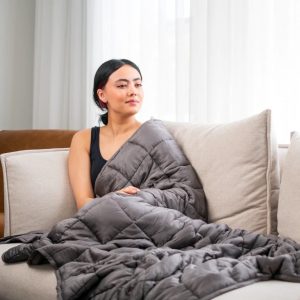Occupational therapy is a health profession that uses assessments and interventions to help people live meaningful lives. It can be used for both children and adults. It can be accessed via private payment, Medicare or NDIS funding.
If your child would benefit from occupational therapy, Adelaide, ask your GP or child and family health nurse. They can help you find someone suitable for your child. For more occupational therapy benefits Adelaide, check this out!
Helps children develop skills
 Kids often have problems with gross and fine motor skills. OTs work with children to help them develop the skills they need to live independently. It can include brushing their teeth, toileting, and dressing themselves. OTs will also teach them self-care skills like eating and grooming.
Kids often have problems with gross and fine motor skills. OTs work with children to help them develop the skills they need to live independently. It can include brushing their teeth, toileting, and dressing themselves. OTs will also teach them self-care skills like eating and grooming.
Emotional regulation is another area where OTs help kids. They can help them learn to manage their emotions and communicate with others. They can also guide how to deal with triggers that may cause their feelings to escalate.
Other focus areas for children include sensory processing, such as teaching kids to understand better and regulate their sensory input. Kids with sensory processing issues may be over-stimulated and have trouble in school or other social settings. They might find tags itchy or dislike loud noises, for example. It can affect their ability to focus and learn. OTs can help kids learn to adapt and cope with their symptoms.
Helps adults with disabilities
Occupational therapy is not just for children or people recovering from injury; it’s also invaluable to older adults who suffer from physical and mental disabilities. It can help them overcome their limitations and live life to its fullest. OTs help them find solutions to access and task limitations, improving their quality of life and reducing their need for care facilities or hospital admission.
OTs can also help adults with vision loss by recommending low-vision equipment, such as a magnification lamp or a visual field expander. They can also provide advice and support to help them cope with their loss of independence, such as encouraging them to seek social opportunities in their community or helping them return to their previous jobs.
Helps people with mental health issues
Occupational therapy helps people with mental health issues by assisting them to focus on their tasks and hobbies, which can help reduce symptoms of depression or anxiety. In addition, OT programs can help people improve the executive functioning skills necessary to carry out daily tasks.
During an initial assessment, the therapist will ask about your health history and current situation and discuss your daily routine. They’ll then determine your goals for the future and develop a treatment plan based on your needs. This plan will include a variety of treatments, from recommending specialist equipment to conducting general strengthening exercises. For more occupational therapy benefits Adelaide, check this out!
Helps people with sensory processing issues
Occupational therapy is effective in helping people with sensory processing issues. It teaches them self-regulation techniques and helps them find calming strategies. t can improve their ability to communicate, participate in daily activities, and manage their emotions. It also helps them learn new skills, such as how to use a computer or ride a bike.
After an evaluation, a therapist will create a care plan with specific short- and long-term goals. She will then use treatment techniques to help the patient achieve those goals. She may also recommend environmental changes to make the home safer and easier to navigate.
Occupational therapy has the power to change people’s lives. It’s not a cure for every health issue, but it can give people back their independence and make them feel more confident about the future. It can also help people find purpose and a sense of belonging. Occupational therapists work with people of all ages, addressing a wide range of health conditions. They can be found in a number of settings, including health organisations, social care services, housing associations and education providers.
 It’s important to note that
It’s important to note that  For those who have difficulty reaching their feet or completing basic foot care tasks such as cutting toenails, removing callous and corns or managing ingrown toenails our disability care
For those who have difficulty reaching their feet or completing basic foot care tasks such as cutting toenails, removing callous and corns or managing ingrown toenails our disability care  One of the many
One of the many 
